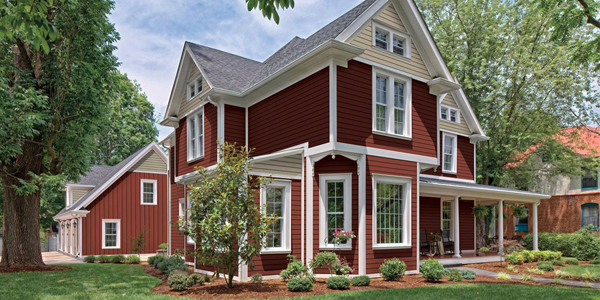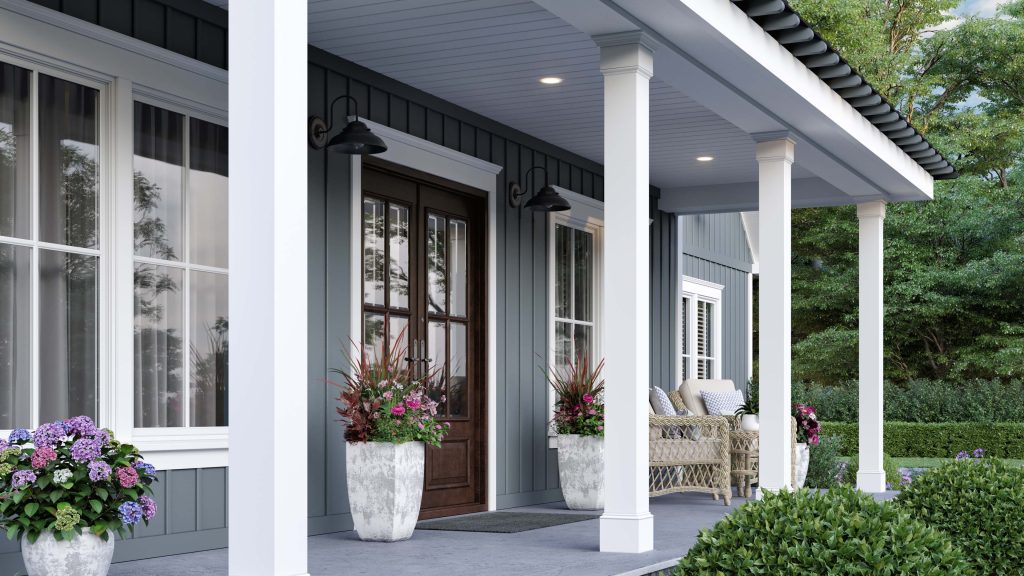Nestled on 20 acres of rolling countryside near Nashville, the 2023 Southern Living Idea House offers a distinct nod to its relaxed surroundings and roots, blending a cozy, welcoming vibe with contemporary and eclectic touches inside and out.
Architects at Lake + Land Studio sought a Modern Farmhouse look but with a feel that it was built over time and added onto in a thoughtful way, growing with the needs of the people who lived there while still working with the landscape. The high-vaulted ceilings of the great room are balanced by smaller adjacent gathering spaces, ample windows of varying sizes and heights bring in lots of light, and the multi-slide back door opens up views to the countryside and valley.
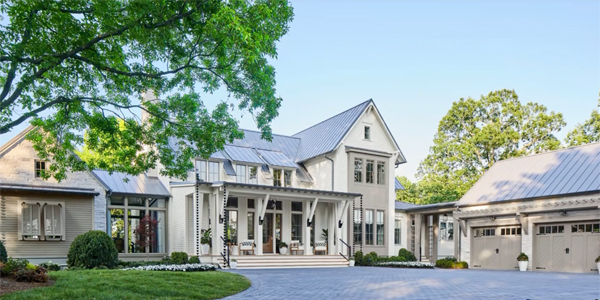
Southern-Style Outdoor Living
As with any true Southern home, seamlessly connected outdoor living spaces were crucial, anchored by a welcoming front porch and a cozy rear terrace with optional screening. An outdoor kitchen and a raised-bed garden expand the entertainment opportunities.
“Overall the house [has] deeper and exaggerated bracketed overhangs on the front and back porches, which allow you to enjoy those spaces a little bit longer when [the day] gets to the hot parts of the sun, but also helps shield you from the many rainy days that we deal with,” Luke Sippel, architect with Lake + Land Studio, told Southern Living.
With the emphasis on indoor-outdoor interplay, interior designer Laura Hodges and the architects worked together to choose the decking, opting for Zuri® Premium Decking from Westlake Royal Building Products™ in the Chestnut color. “We wanted to make sure the decking would work with the interior flooring,” says Hodges, owner of Laura Hodges Studio. “We chose the decking first, selecting a color that would work well with a white oak floor. For the interiors, we selected a darker floor stain on white oak, and we knew that the Zuri decking was going to live with it in a beautiful way.”
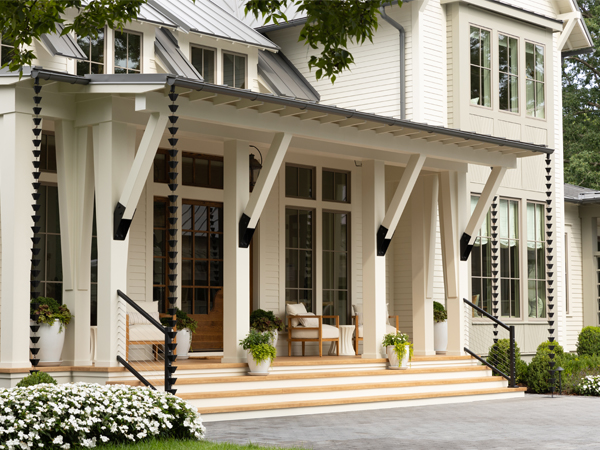
The indoor-outdoor connections are strengthened by a cohesiveness in color and texture. “We worked with the architects on the exterior color palette, selecting colors that reflected the landscape and would coordinate with the interior,” Hodges explains. “We carried the stone from the exterior onto the fireplace in the great room, which gives a great sense of continuity to the design.”
In addition, “Zuri was a beautiful and natural-looking complement to the paint colors and the stone finishes,” she says. “The decking color we chose has a warm undertone to it that works so well with the muted greens and grays of the exterior.”
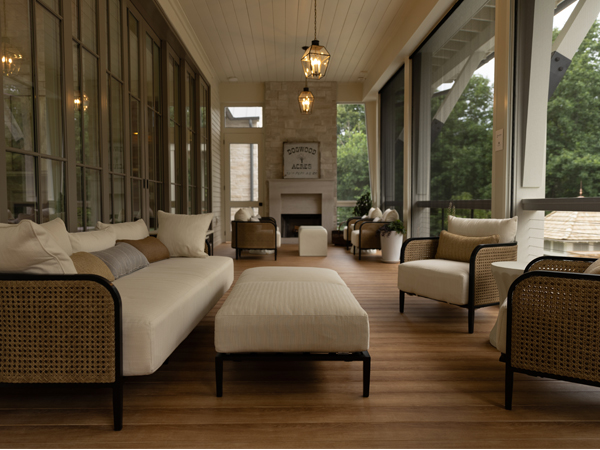
Natural, Sustainable Interiors
Hodges followed similar principles for the interior. “We wanted to make sure the design of the interiors was a reflection of the natural surroundings,” she says. At the same time, “We wanted the house to reflect the lively music and arts scene in Nashville,” which can be seen in the original artwork and locally sourced rugs and vintage furniture.
With a more natural-feeling color palette, Hodges played with stronger textures, including linen, velvet, and leather, and added statement-making light fixtures with graceful silhouettes.
The use of vintage and antique pieces was part of Hodges’ sustainability approach that spans inside to out.
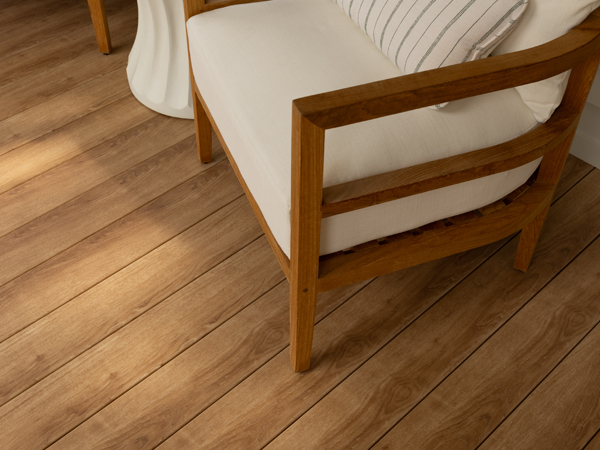
“We made intentionally sustainable design choices inside the house,” the designer says. “What’s nice about having the Zuri decking on the outside is the durability and the longevity of the product. Zuri decking feels and looks natural while holding up really well with low maintenance. Hopefully any new homeowners would keep it there even if the house changes hands and that speaks to the idea that good design is sustainable.”
To see how Zuri Premium Decking can help you create the perfect outdoor space, learn more here, try the deck visualizer, or order a sample.





